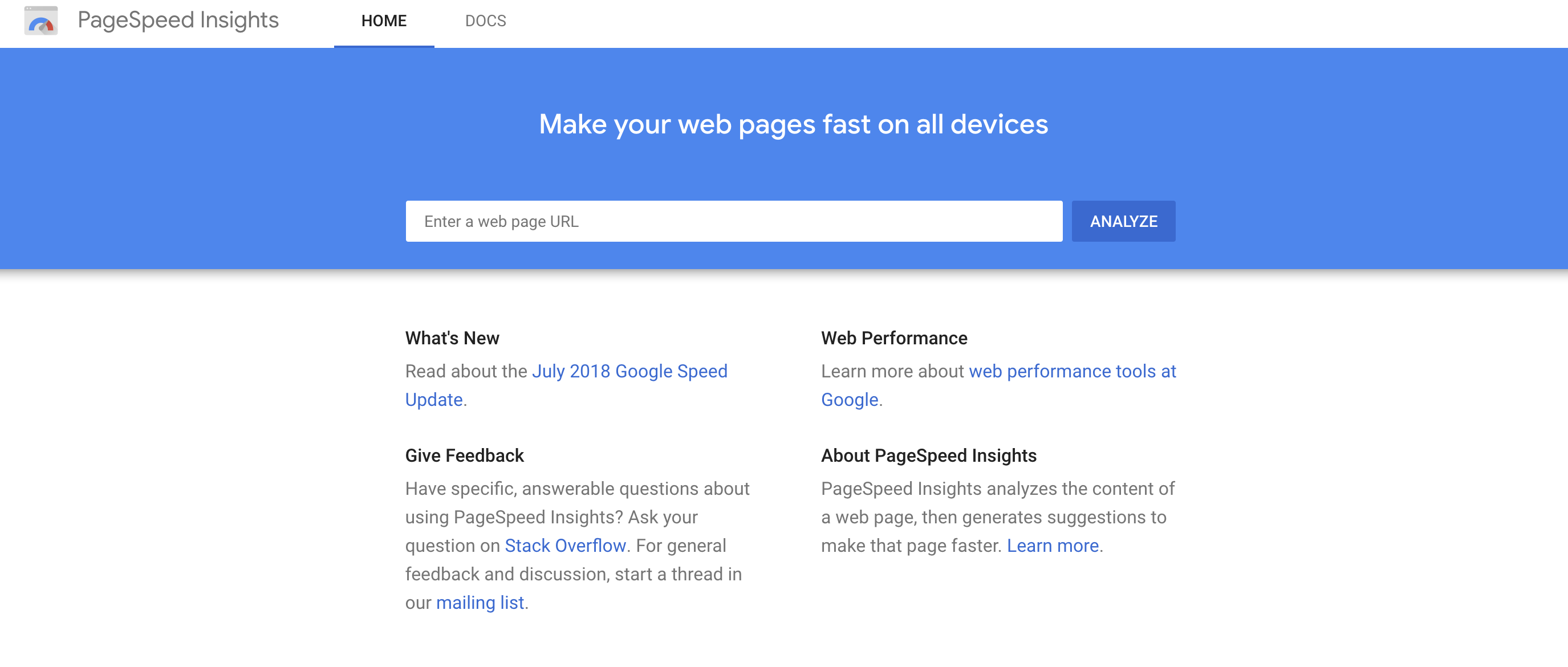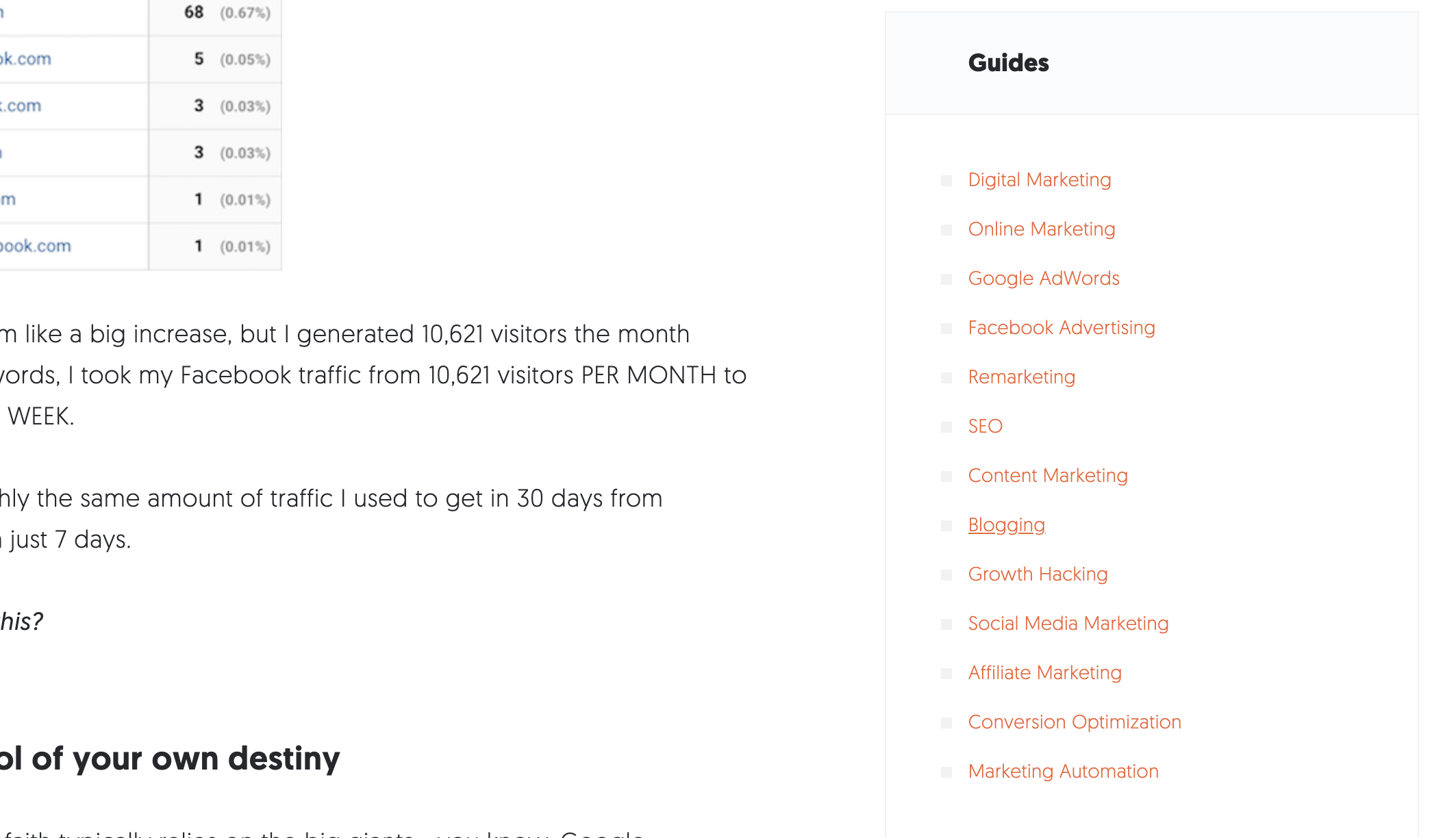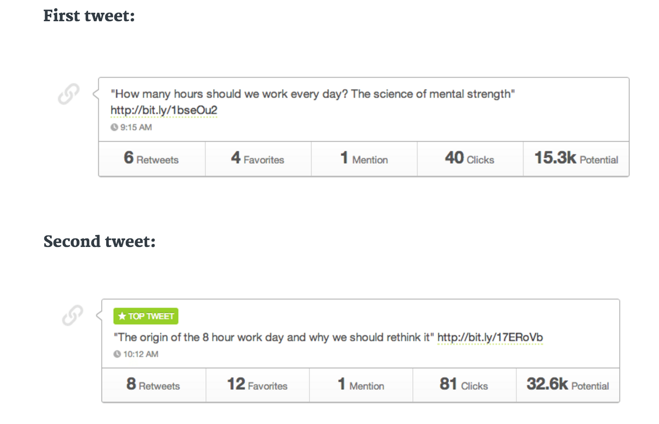A lot of webmasters are interested in improving the web pageviews of their website.
However, most don’t know where to start.
In this blog post, we’re going to take a look at what can be done to improve the pageviews of your website.
We’ll go through a number of strategies for increasing pageviews. There may even be some techniques that you haven’t even heard of before.
By the end of this blog post, you’ll have an incredible overview in terms of what needs to be done to boost the pageviews on your site.
Let’s begin!
Create great blog content and make sure it is optimized
Though there are many tactics that you can rely on when it comes to improving pageviews, what matters most is the quality of the content you have on your site.
The better the content on your site, the less that you have to convince people to click around or naturally up your conversion rates.
Think of it like a book.
The ‘pageviews’ of a book will be higher if the book is good.
If the content of the book is no good in the first place, hype or an awesome book cover won’t be enough to get someone to read through to the end.
So, you need to treat your website the same way.
Make sure that you put effort into creating great blog content, above all else. Otherwise, the average reader isn’t going to want to invest their time in pouring web pageviews over your web site.
Doing so will also make everything else we’re going to cover more effective and easier to pull off.
If you’re interested, I’ve covered here and here how you can create effective and relevant content.
You’ll also want to make sure that you’ve done some basic search engine optimization for your content, too.
This will make it easier for you to rank relevant content in search engines.
You can use a plugin, like Yoast SEO, if you want to improve the optimization of your blog content.
Now that we’ve got that covered, let’s explore the first thing that you can do to improve pageviews.
Create evergreen content
Another way that you can improve pageviews is by placing a focus on creating ‘evergreen’ content.
This is blog content that will still be relevant for months, and perhaps, even years to come.
A lot of blogs find that it is their evergreen content that brings in the majority of their web page views and steady search engine and social media traffic.
In some cases, you can even turn an existing blog post into something that is evergreen.
Benjamin Brandall managed to increase page views by 468%, by doing just that.
Evergreen content generally tends to fare better in the search engine rankings because it naturally attracts a lot of links (and, therefore, authority) over time.
In most cases, evergreen content is relevant content that is a ‘one-stop’ resource for a certain topic.
You don’t have to do something as extensive as my ‘Guides,’ but you do want to create something that is in-depth and highly informative if you want to generate page views.
‘How to’ blog posts tend to fit these criteria well.
If you want to really corner a section of the internet with an evergreen blog post, try and niche down what you’re looking to create.
You may want to take a look at the majority of unique visitors that are coming to your site and work out what they’re primarily trying to learn about and get better at in order to raise web page views.
You can do this by using Google Analytics and analyzing unique visitor data.
Once you have that information, you can then create a resource for just those people.
Alternatively, you might want to take a look at your existing customers and figure out what they searched in order to find your site and what relevant content encouraged them to get in touch with you and buy from you.
You can then use that information to create evergreen content that matches the criteria you unearthed above – creating relevant content that appeals to people who are likely to become customers of your business.
Creating a great user experience
You can also improve web page views by improving the user experience of your website.
This might sound like a strange thing to work on if you’re looking to improve pageviews.
But, it all makes sense, when you take a look at one of the things that fundamentally influence pageviews in the first place.
And that is…people will want to use your website more if it is easier to use.
Think about it – don’t you want to spend more time on a website that has a great user experience?
And so, if you look at it from that perspective, it is clear to see how improving website user experience can lead to more web page views.
Knowing that – what can be done in order to improve user experience?
One of the first things that you can do is to make your website load faster.
People are becoming increasingly accustomed to things that are quicker.
If your website lags behind this trend, unique visitors won’t have much mercy and they’ll just click the back button.
That might sound harsh, but, unfortunately, that’s just the way that it is.
One study found that a one second delay in load time can reduce conversions by 7%.
Thankfully, improving the load speed of your website is not all that difficult. And, with a few tweaks, you can definitely make some easy changes in the page load speed.
You can even use a tool provided by Google, called PageSpeed Insights, to help you figure out what is slowing down your web page load speed.
Another way that you can improve the user experience of your website is by removing anything that could be seen as ‘intrusive.’
The same philosophy also applies to any ads that you’re looking to display, too.
Try and space your ads out and don’t have so many ads that people can’t enjoy the content that they’re reading.
Plus, if you have too many ads, people might just end up clicking on them, causing them to leave your website – harming your ability to generate more web page views and increase conversion rates.
Additionally, you’ll want to put a lot of effort into displaying ads that relate to the topic your site covers.
Sure, there may be some targeted ads on your site right now, but question what can be done to make them even more targeted.
This is another way that you can potentially improve the user experience on your site – albeit a slightly unusual one.
Pop-ups and ads can be important for financial reasons, and yes, you probably want to make money from your site – but don’t do it at the expense of ruining your website’s user experience.
Because, by doing so, you may just hurt the longevity of your website – reducing conversion rates and profits in the long term.
You can also improve user experience by making your website simpler.
A simple website is a website that is easy to use.
By eliminating clutter and distractions, you’ll be able to make it so that the blog content is front and center.
This gives people a chance to engage with what you have to offer.
And, if they enjoy what you have presented them with initially, they won’t mind poking around other parts of your site to see what else you can impress them with.
Have a sidebar that promotes related blog content
You’ll want to use your website’s sidebar to display a related blog content section and a search feature, too.
It’s a good idea to make sure that you tag your blog posts properly so that it is easy for people to find related content and also so that the sidebars work as they should.
Having a related0-content sidebar is great because it is a subtle way of nudging people to read some of your other blog content.
The use of a search engine tool is ideal, too, if you want to make it so that people can easily search for your opinion on a matter that relates to the topic you’re blogging on.
You may even want to experiment with a ‘popular posts,’ section.
I do that with my guides here on the blog:
You can also have a section at the end of your blog posts that promotes other blog posts of interesting content.
As you do this, it may be worth split-testing the way that you promote related content.
For example, it might be a good idea to promote blog content alongside an image.
Or, it might be better to just list one piece of content that people can click on, rather than two or three – making the decision to click somewhat easier.
Promote old blog posts (and do a better job at promoting existing content)
Another way that you can improve pageviews is by promoting old blog posts.
Many blogs often fail to promote old pieces of content even though the content in question is still quite valuable and could generate pageviews.
Now, it will be easier to promote old blog posts if you have created evergreen pieces.
After all, if it is evergreen, it means that the blog content is still valuable, even if it has been published a while ago – making it worthy of promotion and generating page views.
Some people are put off a blog post if they see that it was published a long time ago.
Because of this, you may want to experiment with removing the ‘publish dates’ from your content. I did this a couple of years back and it gave my organic traffic a nice boost.
This will help to minimize the number of people who don’t read a piece of content just because they see it is old, and, therefore, no longer useful (in their eyes), and maximize relevance for page views.
In doing so, you will ensure that your promotion efforts for ‘old,’ content will not be in vain.
Social media is also a great way to promote old pieces of content.
You can promote old blog posts on social media by using Buffer.
However, when you’re promoting old pieces of content on social media, you may want to use different forms of copy.
As you can see below, the second tweet managed to earn twice as many clicks as the first, thanks to a change in the copy.
Essentially, people might become ‘blind’ to a piece of blog content because they have seen you promote it already.
However, if you promote it using another ‘benefit,’ the people who weren’t inclined to click on your content before may now be intrigued.
For example, if we were promoting something to do with pageviews, one social media post might say – ‘How to improve pageviews’ and another might say ‘Why you NEED to get rid of content publishing dates.’
Both social media posts relate to the same topic but hit on different issues.
I also mentioned above that you need to do a better job at promoting new blog posts.
More specifically, I’m talking about email outreach designed to attain links.
If you do a good job at email outreach and you manage to successfully attract some important links, your website will generate more pageviews in the long term. And they can also lead to some impressive conversion rates in the long term.
This is mainly because your blog content will achieve better search engine rankings.
Conclusion
Increasing pageviews can seem like a complicated task if you’ve never paid attention to such a metric before.
After reading this blog post, however, you should now have a good sense of what you should be doing to increase website page views.
Whether it’s creating evergreen pieces of blog content or improving website load speed – there’s a lot to get working on.
Take what you’ve learned in this blog post and put it into action and you should start seeing an improvement in pageviews but also in overall conversion rates.
In doing so, there’s a good chance that your website, and your conversion rates, will be better off because of your efforts.
What have you learned about increasing pageviews? Please share your thoughts below!




Comments (78)